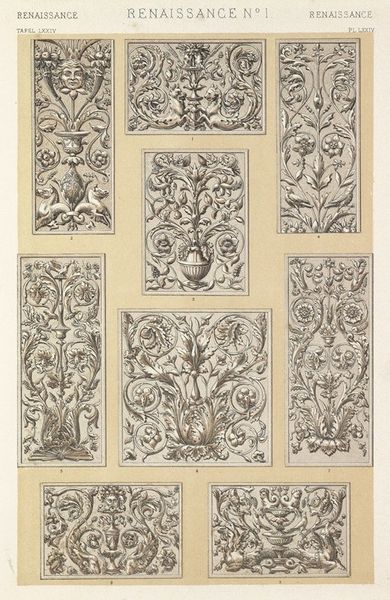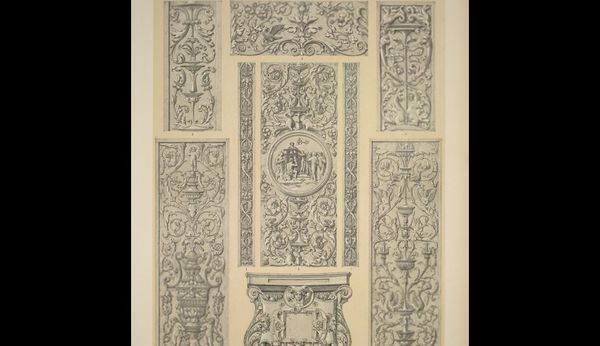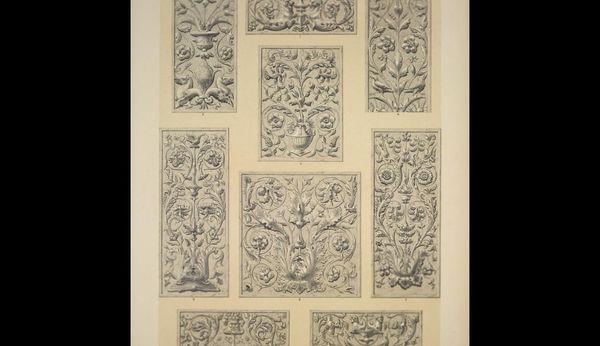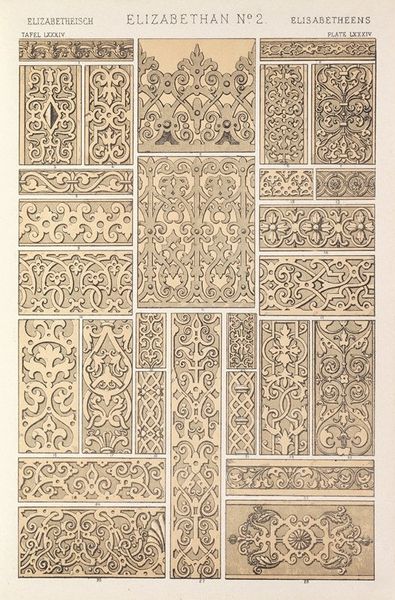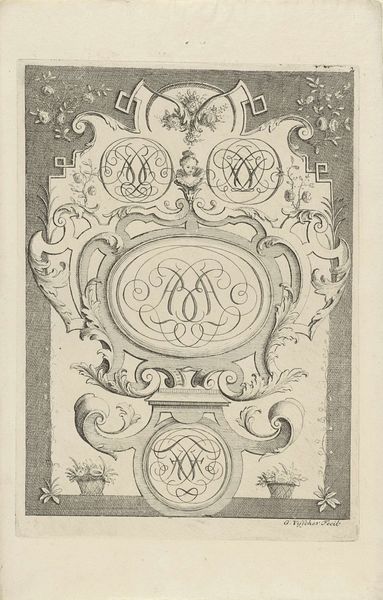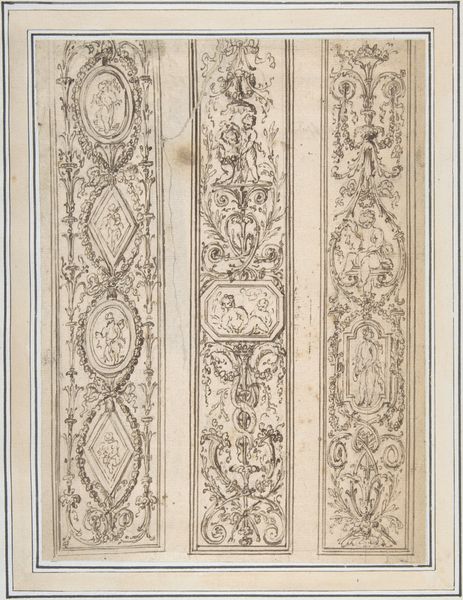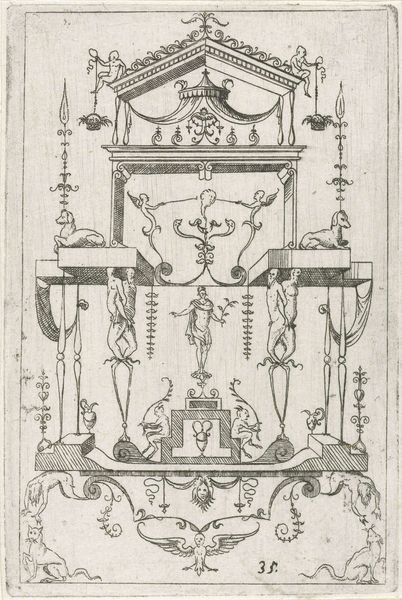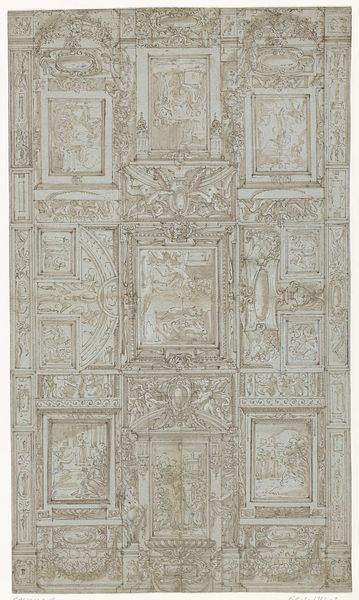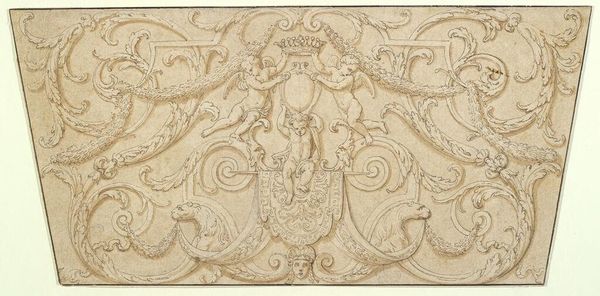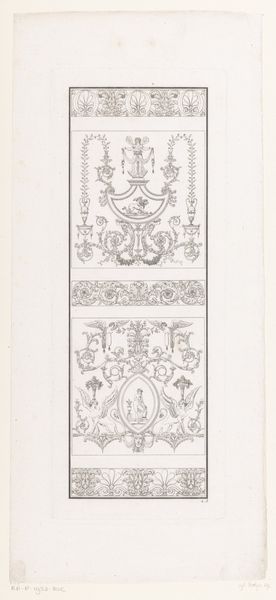
drawing, print, paper, engraving
#
drawing
# print
#
paper
#
form
#
11_renaissance
#
geometric
#
line
#
academic-art
#
decorative-art
#
engraving
Copyright: Public Domain: Artvee
Curator: Looking at this print from 1856, titled "Renaissance No.3" by Owen Jones, my first impression is of intricate density, like an overwhelming visual feast for the eyes, particularly in the patterns and varied textures. Editor: Indeed. Jones was a key figure in the Victorian design reform movement, deeply engaged with the study of ornament. He wanted to use prints like this to make design principles more accessible, in his quest to educate and elevate the aesthetics of industrial production. Curator: The interplay of lines is fascinating; the linear framework gives it order, but it also amplifies the opulence and density. Note how these detailed geometric components seem to push outwards from the page in their ambition. Editor: Quite so. Owen Jones published "The Grammar of Ornament" around the same period. His aim was to analyze decorative elements from various cultures and epochs, emphasizing the inherent value and utility of form. The cultural appropriation is unavoidable. But Jones and his Victorian colleagues considered their design sense more informed and rigorous, by taking cues from diverse traditions. Curator: Speaking of informed sense, do you believe this artwork embodies its Renaissance namesake, or does it strike you as more of a Victorian interpretation of that era? Editor: In many ways it's a reflection of Victorian aspirations; design during that period became preoccupied with both historical revivalism and the pursuit of accessible beauty via the print revolution. You're seeing his social circle attempt to define and improve upon a visual vocabulary for the masses. Curator: That explains the eclectic selection of decorative and mythological references throughout. This engraving feels as though he's not only celebrating form, but trying to teach it. What remains potent is the emphasis on these basic design principles: how a singular mark on paper can generate infinite aesthetic variations. Editor: I concur; Jones believed that design should positively influence daily life, advocating for beauty that was both functional and available. Looking at it this way helps us grasp the importance Jones ascribed to ornamentation within society's broader artistic and political context.
Comments
No comments
Be the first to comment and join the conversation on the ultimate creative platform.

